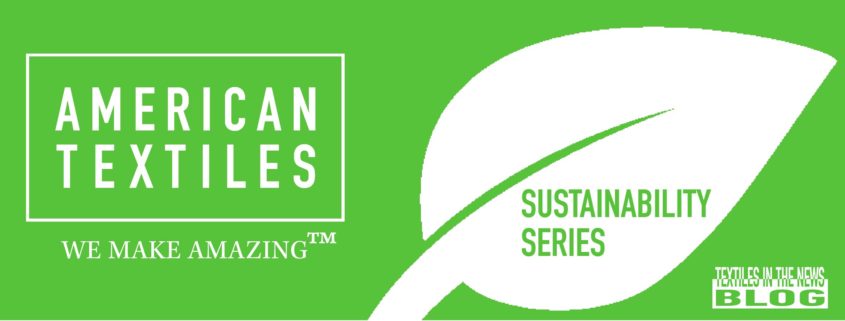American Textiles: We Make Amazing Sustainability Series
The U.S. textile industry’s investment in sustainability and the “circular economy” comes at a pivotal time.
Consumer demand continues to grow for eco-friendly products, legislators and regulators are taking a hard look at environmental issues across manufacturing industries, and executives across a broad industry spectrum are making sustainability a pillar of their business models.
For years, domestic textile producers have been developing effective sustainable technologies, practices and products to address the myriad challenges associated with reducing manufacturing waste, water and energy consumption, and greenhouse gas emissions—moves that have helped curb environmental impact.
While there is ample anecdotal evidence showing that the steps textile companies are taking in the U.S is reducing waste, water and energy consumption and greenhouse gas emissions, no academic or scientific studies exist to date that measure either the impact in the U.S. in aggregate.
However, scores of U.S.-based textile producers, brands and retailers publicly highlight their sustainability goals, commitments, policies and products on their websites.
Most industry executives and experts cite the Ellen MacArthur Foundation as the best credible source for measuring global textile and apparel pollution. China, which has a poor environmental track record and relies largely on coal-based energy, is the number one supplier of apparel imported to the U.S.
According to the Ellen MacArthur Foundation, the global supply chain is accountable for consuming 98 million tons of non-renewable resources—from the oil used in synthetic fibers to pesticides and fertilizer in cotton production. Globally, the textile industry uses 93 billion cubic meters of water annually, including cotton farming, according to an Ellen MacArthur Foundation study in 2017. In addition, the Circular Fibres initiative (a consortium of NGOs, philanthropists, brands, and cities cited in the MacArthur report) estimates the global textile industry generated 1.2 billion tons of greenhouse gas emissions annually.
Experts warn that all stakeholders both here and abroad will continue feeling the pressure to make greater progress in the years to come.
U.S. textile executives fully understand the drive for sustainability, which often yields benefits in the form of cost-savings and increased efficiencies, and many are at the forefront of the country’s recycling efforts, conservation efforts and advanced technology developments.
Against that backdrop, NCTO is launching a blog series on sustainability that will feature interviews with several textile executives and experts to highlight the industry’s progress, while also outlining challenges companies face in the quest to ultimately contribute to a cleaner environment.



